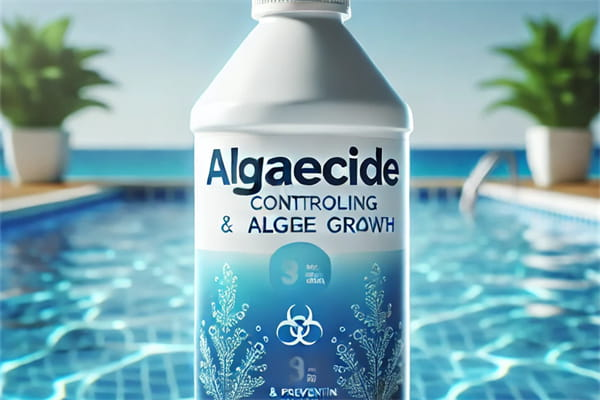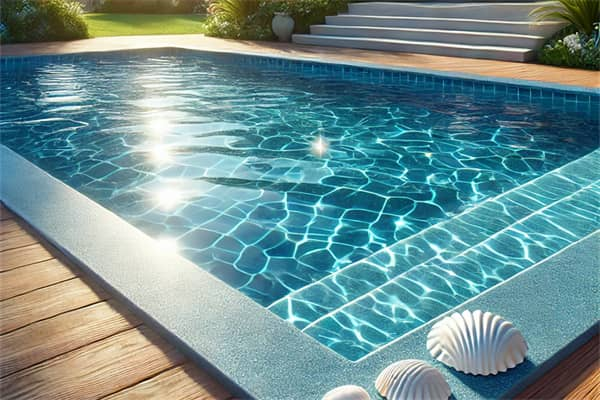Algaecides play a crucial role in maintaining clean and safe water environments by controlling and preventing the growth of algae. Whether you have a home swimming pool, manage a public water park, or are involved in aquaculture, algaecides are indispensable tools for ensuring water quality. Understanding the various application scenarios and fields where algaecides are used can help maximize their value and effectiveness. This blog will explore the current uses of algaecides in different settings and predict future developments in this field.

Current Application Scenarios
1. Home Swimming Pools
Daily Maintenance:
Algaecides are commonly used in residential swimming pools to prevent algae growth and keep the water clear. Regular use of algaecides helps pool owners maintain an inviting and healthy swimming environment without the hassle of frequent, intensive cleaning.
Problem-Solving:
Homeowners use algaecides to tackle specific algae issues, such as green, black, and mustard algae. Each type of algae requires a different approach, and specialized algaecides are formulated to address these unique challenges. For instance, copper-based algaecides are effective against stubborn black algae, while quaternary ammonium compounds work well for general maintenance.

2. Public Pools and Water Parks
High Traffic Management:
Public pools and water parks, which experience heavy use, rely on algaecides to maintain water quality and safety. High bather loads increase the organic load in the water, creating ideal conditions for algae growth. Regular application of algaecides ensures that these facilities remain safe and pleasant for visitors.
Regulatory Compliance:
These facilities must adhere to strict health regulations, making regular use of algaecides essential for compliance. Ensuring that the water remains free from harmful microorganisms, including algae, is crucial for passing health inspections and maintaining a good reputation.
3. Fish Ponds and Aquaculture
Water Quality Control:
In aquaculture, maintaining optimal water quality is vital for the health of fish and other aquatic organisms. Algaecides help manage algae levels, ensuring a balanced ecosystem. Excessive algae can deplete oxygen levels, harm fish health, and disrupt feeding behaviors. By controlling algae, aquaculturists can promote healthier and more productive fish populations.
Economic Efficiency:
Proper algae control can enhance the productivity and profitability of fish farms by preventing algae-related issues. Healthy fish grow faster and are less susceptible to disease, reducing costs associated with medical treatments and lost stock.
4. Lakes and Reservoirs
Ecological Management:
Algaecides are used in natural water bodies like lakes and reservoirs to control harmful algal blooms (HABs) that can negatively impact water quality and aquatic life. HABs produce toxins that can kill fish, harm wildlife, and pose serious health risks to humans. Strategic algaecide applications can mitigate these risks and protect aquatic ecosystems.
Recreational Safety:
These treatments ensure that recreational water bodies remain safe for public use. By preventing or controlling algal blooms, managers can maintain the aesthetic and recreational value of lakes and reservoirs, attracting more visitors and supporting local economies.
5. Industrial Water Systems
Cooling Towers and Pipes:
In industrial settings, algaecides prevent algae growth in cooling towers, pipes, and other water systems, which can impede operations and reduce efficiency. Algae can form biofilms that clog pipes, reduce heat transfer efficiency, and increase energy consumption. Regular algaecide treatments help maintain optimal system performance.
Wastewater Treatment:
Algaecides are used to control algae in wastewater treatment facilities, ensuring efficient processing and compliance with environmental regulations. Algae can interfere with the treatment process by clogging filters and disrupting microbial communities. Proper algae management is essential for maintaining treatment efficiency and meeting discharge standards.
Future Developments in Algaecide Applications
1. Eco-Friendly Algaecides
Biodegradable Options:
Research is focusing on developing algaecides that are environmentally friendly and biodegradable, reducing the ecological impact. These products aim to provide effective algae control without leaving harmful residues in the environment. Biodegradable algaecides break down into harmless substances, minimizing their impact on non-target organisms and ecosystems.
Natural Alternatives:
The use of natural compounds and biological agents to control algae growth is gaining traction, offering safer alternatives to traditional chemical algaecides. For example, certain bacteria and enzymes can selectively target and degrade algae, providing a more natural and sustainable solution.
2. Advanced Formulations
Targeted Solutions:
Future algaecides may offer more targeted action against specific algae types, improving effectiveness and minimizing collateral damage to other aquatic life. Precision targeting can reduce the amount of algaecide needed and minimize the risk of harming beneficial organisms.
Long-Lasting Effects:
Innovations aim to increase the longevity of algaecide treatments, reducing the frequency of application and overall maintenance costs. Slow-release formulations and encapsulated algaecides can provide extended protection, making maintenance easier and more cost-effective.
3. Smart Technology Integration
Automated Systems:
The integration of smart technology with algaecide applications can lead to automated dosing systems that optimize the amount of algaecide used based on real-time water quality data. These systems can monitor parameters like pH, temperature, and algae concentration, adjusting algaecide doses as needed to maintain optimal conditions.
Monitoring and Control:
Advanced monitoring systems can provide precise control over algae levels, improving the efficiency of algaecide use. Remote sensing and IoT (Internet of Things) devices can offer continuous data on water quality, enabling proactive management and early detection of potential issues.
4. Regulatory and Environmental Adaptations
Stricter Regulations:
As environmental concerns grow, regulations governing algaecide use are likely to become more stringent, driving the development of safer and more sustainable products. Manufacturers will need to innovate to meet these regulatory requirements while maintaining product efficacy.
Global Standards:
The establishment of global standards for algaecide applications can ensure consistent and safe use across different regions and water systems. Standardized guidelines can help harmonize practices, improve safety, and promote the adoption of best practices worldwide.
Conclusion
Algaecides are indispensable tools in various settings, from home pools to industrial water systems, ensuring water quality and safety. As we look to the future, advancements in eco-friendly formulations, smart technology integration, and regulatory adaptations will continue to shape the algaecide industry. By understanding the current applications and anticipating future trends, we can maximize the value and effectiveness of algaecides in maintaining clean and safe water environments.
 Instant
Quote
Instant
Quote Email
Us
Email
Us